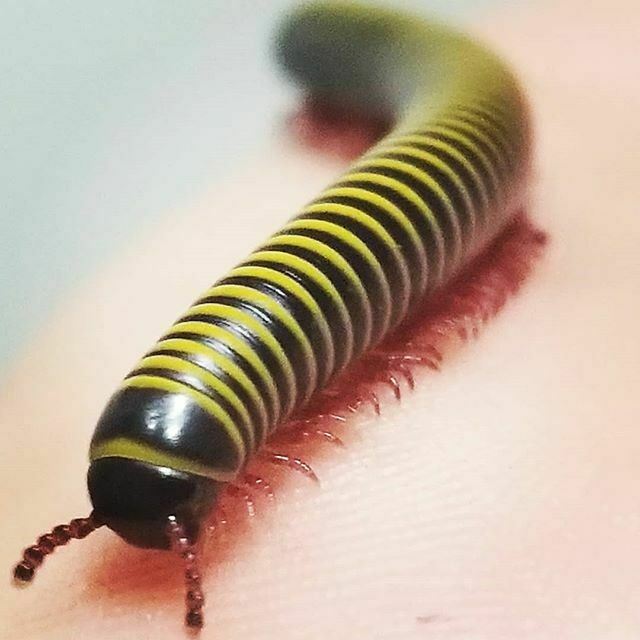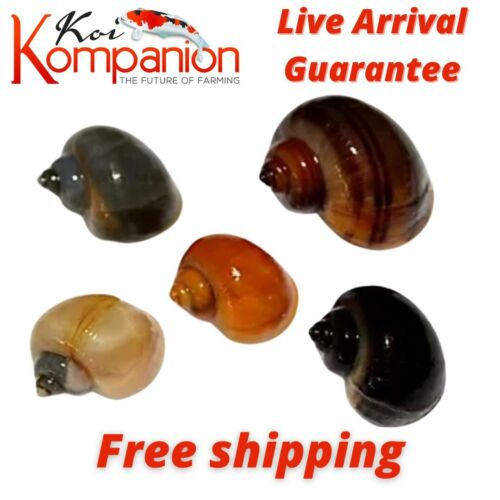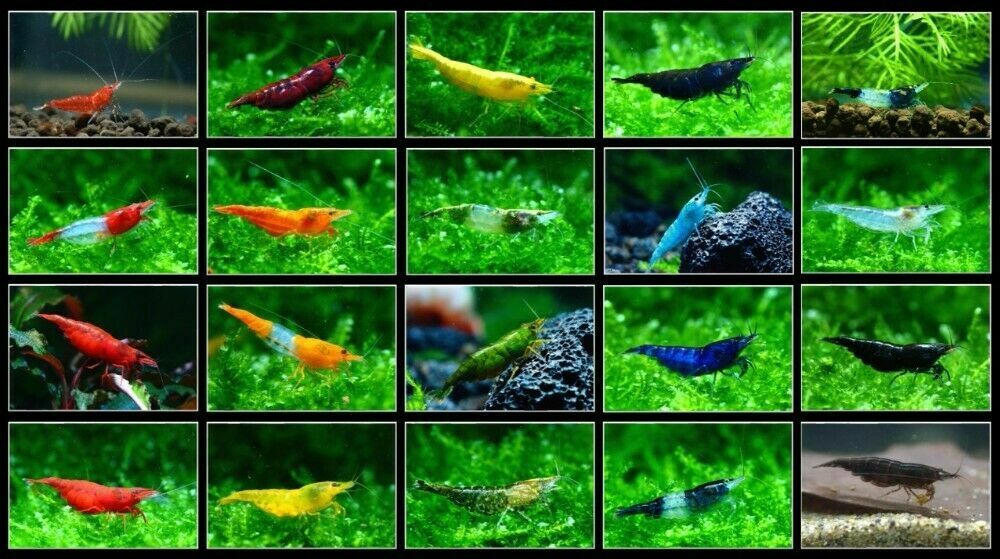-40%
40 LIVE MILLIPEDES Bumblebee Anadenobolus Monilicornis / Scarlet Trigoniulus
$ 11.55
- Description
- Size Guide
Description
This item is a colony starter mix of one of the best composters Millipedes. To the best of my abilities I unidentified 3 types of millipedes: Bumblebee (Anadenobolus Monilicornis), Smokey Oak (Narceus Gordanus), Scarlet (Trigoniulus Corralinus) There will be at least2 types of millipedes
present in the mix.
Millipedes are underrated in composting culture
Scientists from
Mangalore University
,
Alagappa University
and the
Madurai Kamaraj University
has shown that
he quality of millicompost is superior to that of vermicompost.
The nitrogen and phosphorus content is higher in millicompost than vermicompost. Additionally, millicompost brings down the pH of the soil thus promoting fungi dominated soil environment.
Description and background
This fungal dominant product works to improve the health of your plants by building a resilient soil system through the hard work of two specific species of millipedes -Trigoniulus corallinus, (Florida Rusty) and Anadenobolus monilicornis, (Jamaican Bumblebee). These millipede species are from Indo-Malayan tropical climates and have migrated through the Caribbean to the southern tip of Florida where they have become naturalized to the only subtropical region in the United States.
As macro-arthropods, millipedes are detritivores that eat broken down plant and tree matter on the surface of the tropical forest floor. In most forest systems, arthropods, (the whole group), are responsible for up to 80% of the breakdown of plant material on the forest floor. They do not target specifically the bacteria and fungi, (as do their cousins the Micro-arthropods), but rather consume bacteria and fungus by eating the detritus inoculated with them. Often times the millipedes are found above ground, devouring fungi fruiting bodies, (mushrooms), starting on the soft undersides of the mushrooms where the spores are released and then crawling back underground where they release them closer to the rhizosphere ? resulting in better conditions for better germination.
Millipede castings are extremely high in active fungi as well as spores and propagules. As seen in the testing some 45:1 fungi to bacteria: Packed with free-nitrogen fixers, cellulose and phosphorus solubilizers, the castings are consistent with a properly fungal-dominant product. Fungi are known for phosphorus breakdown with organic acids: Mycorrhizae fungi possess the ability to transport and deliver nutrients (phosphorus) directly into roots for uptake by the plant. The helper bacteria are also present to assist in achieving the desired elements for superior growth, flowering, and fruiting. Bacteria are already dominant in most soil and can be increased easily but having the right ones do the right job is especially valuable.
Millipede castings
is produced using millipedes, a specific group of hardwood mulch, water and other ingredients in a static pile system to create the baseline product. The numbers of fungi and bacteria can be increased by incorporating inputs of organic microbe/fungi foods, elements along with minerals which are consumed by the millipedes and can alter both microbial plus fungal populations to create the balance required for optimal growth of specific plant species. Another option is to combine fungal dominance of millipede castings with earthworm castings? bacterial dominance to achieve a particular balance and glean all the benefits that come through an earthworm?s diet.
Why millipede castings are good for soil
Millipedes are detritivores (decomposers) that eat decaying matter on the tropical forest floor. In most forest systems, decomposers (like millipedes) are responsible for up to 80% of the natural composting process. In a process similar to Micro-arthropods, who target specifically bacteria and fungi, millipedes most importantly consume the detritus inoculated in the matter. The difference between the two, is absorbability. Millipedes, unlike other species, promote a fungal growth through casting on the rhizosphere level! This means Millipedes work to promote the mutually helpful relationship between fungi and plants.
In this area just prior to the rhizosphere large numbers of wood decaying species of fungi have the responsibility of breaking down the initial layer of organic material to fall to the forest floor. These fungi are the best decomposers of lignin and cellulose, (the hardest parts of wood to break down). Next comes an army of macro-arthropods from springtails to pill bugs?..and of course millipedes: They break up, aerate, and consume the ?duff? layer, leaving behind fungally dominant castings.
The feces is expelled in a tiny, tightly constructed pellet. This pellet acts as a tiny natural SLOW RELEASE flow of bacteria, fungi and ultimately ENZYMES which help to prepare detritus to be consumed by the coming onslaught of microbial biomass. This process can mineralize the elements already present in soil. These mineralized elements then transfer deeper underground and into the waiting arms of the soil food web. An Army of Amoebae, Protozoa, Nematodes and Micro-arthropods consume bacteria and fungi, (along with each other, too!), releasing otherwise-immobilized minerals and nutrients in a bio-available form directly into the rhizosphere to be consumed by plants through the root system and their associations with the soil food web.
Other advantages of millipede compost
Millipedes can consume wastes 5 times their body weight.
Millipedes are able to lock away the nutrients in their fecal matter and then release them periodically. You can buy millipede castings here https://www.ebay.com/itm/324171633680
As research showed millipedes have truly unprecedented microorganism diversity in their gut that will charge your compost pile with bunch of beneficial fungi and bacteria.
In addition to the above mentioned arthropods and worms I inoculate my bins with a special home-brewed blend of
microorganisms
to speed up the composting process also known under commercial names EM1 and EM-Bokashi, it contains 3 types of bacteria: Lactobacilus casei (Lactic acid Bacteria), Rhodopseudomonas palustris and Saccharomyces cerevisae (Yeast). Studies by professor Teruo Higa showed significant benefits of these microorganisms in composting and are applied in organic farming worldwide in “Bokashi composting”
The worms and millipedes are shipped in a medium that includes cocoons of earth worms, baby worms baby millipedes and their natural habitat consisting of castings, peat moss and all the symbiotic organisms that help the worms and millipedes settle in your new environment.
When you receive the package you should have already a bin with medium prepared for them. I mainly use coco coir and peat moss however it can be shredded paper, shredded cardboard, cheap top soil or cow manure from Home depot. I recommend to take the whole content of the bag and placing it as is in your bin/compost pile. When I just started I spread the newly bought batch of worms out in my bin and the next morning I had a riot on my hands, they were all over the floor and walls.
After getting used to their newly found home they will not escape your bin/compost pile, they normally stay where the food is.
Red wigglers will eat anything you throw at them. They can easily survive a high acidic environment if you feed them lemons, limes or other acidic fruit. Shredded paper or cardboard makes a perfect bedding for earth worms. After food scraps this is their second preferred choice of food as I noticed.
Don’t forget to remove any plastic from the boxes before you shred them
You can feed your worms and millipedes pretty much anything that comes from your kitchen table. Opposite to the widespread opinion the will eat meat, milk, eggs and other proteins as long as you don’t mind flies and occasional visits from your neighborhood opossums. I recommend getting EM1 or cheaper version of the same microorganisms that can be brewed at home or bought on Etsy or Ebay.
When I started using my home-brewed version of EM1 it eliminated any smell coming from the bins no matter how moist they were.
How to make your own microbial inoculant otherwise known as EM1.
The easiest way is to use the
sauerkraut juice (pickled sour cabbage)
it contains both lactic acid bacteria and yeast. There is also a multitude of recipes on youtube, some of them being so precise in ingredients and preparation process that they make me wonder. The most well know way is to mix rice with milk and let it stand for 2-3 weeks then filter out the curd on top and use the liquid. From my experience any type of grain can be used and in warm environment it is ready after 48 hours.
The use of the bacterial mix ranges from treating human fecal matter to organic fertilizer to unclogging drains to healing cold sores.
Order process
To ensure survival of the species any order placed after Thursday will be shipped the next Monday.
I will send the package using USPS mail. To ensure that you receive the worms and millipedes alive make sure to track the package using the tracking number provided and not to leave them for a long time in your mail box. Left in extreme heat or cold they will not survive for long. If that happens or there is a problem with the batch let me know and I will send you another batch, simply help with the cost of shipping.
The mix will have roughly 40 millipedes total weight is about 11-16 Oz. I might also include (depending if I have it at the moment) free 2 Oz sample bag of Purina Worm Chow to keep your worms happy for the first couple of days.
If you need more Purina worm chow you can use the links below to order:
5 lbs https://www.ebay.com/itm/324228344620
10 lbs https://www.ebay.com/itm/324171633680
If you would like to order millipede castings you can use this item:
http://www.ebay.com/itm/224038768684
Further reading in benefits of millipedes
https://docs.google.com/document/d/1uf2UA_xQeOvaEH2Ye-0dCubeZ6mvYYBLnSD4ppcMyVo/edit?usp=sharing
Microbial Matrix Report
https://drive.google.com/open?id=1Sg8dk1yxwJwZ2qpR8zq10oJHSd2QEysc









